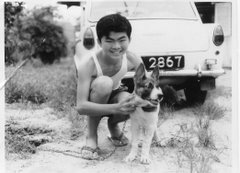.jpg) |
| Wittering Airbase, UK |
In June
this year, I brought my family to the UK for a holiday. I took the opportunity
to visit my friends Brian Mitchell in Cambridge and John Harper in York.
Enroute from Cambridge to York, we drove past the RAF airbase at Wittering. The
sight of a fighter jet – I think it was a Harrier Jump Jet – at the entrance brought
back some memories of the Changi that I used to know as a boy; especially the
RAF Airbase at old Upper Changi Road.
Memory No. 1 – No Highway
 |
| Wittering Rd in Changi |
When I was
in Secondary 4, we had to study the book No Highway by Nevil Shute for our
Senior Cambridge (equivalent of today’s O-Level) English Literature paper. The
year was 1968. The name Farnborough was frequently mentioned in the book and I
was rather curious as to why we had a road in Changi with the same name. I only
found out years later that the roads in the Changi Airbase vicinity were all
named after famous RAF airbases in the UK. Naturally, there was also a
Wittering Road in Changi.
Memory No. 2 – Old Upper Changi Road
My memories
of this part of Singapore are documented in my book Good Morning Yesterday. Here’s an excerpt from pages 147 and 148.
“The occasional trip to Changi Beach
was always a great delight for us. From our home in Lorong Chuan, we used to
travel to Changi via Upper Serangoon Road and Tampines Road. The sight of the
solemn grey walls of the Changi Prison which greeted us as we came to the end
of Tampines Road meant that we were nearing our destination. After that it was
a straight stretch of road along Tanah Merah Besar which ran along the
perimeter of the prison followed by a left turn into the coastal road called
Nicoll Drive before arriving at Changi Point. My own favourite activity at
Changi Beach was rowing the rented wooden sampans for an hour or two.
An alternative route that we took to
get to Changi Beach was via Upper Changi Road. Until just a few years ago, this
road led right up to Changi Village. We liked this route because we could see
the combat aircrafts sitting at what I now know was called the Dispersal Area
of the British Royal Air Force.”
Unfortunately,
in recent years that stretch of the road had been closed to the public. Hence,
it was a great disappointment that I could not bring John Harper and other UK
friends to this part of Singapore which they so fondly remember.
 |
| Final stretch of Upp Changi Rd closed to the public |
Visit to Changi Airbase (West)
A few weeks
ago, I received a pleasant surprise in my inbox. It was an invitation from the MINDEF
NS Policy Department to visit old SAF military camps; one of them being the
Changi Airbase. Thus it was that on Saturday, 14th of September, a
group of bloggers boarded a coach at Spore Expo MRT Station which brought us
to, first, Selarang Camp, home to SAF’s 9th Division, and then to
Changi Airbase (West). I learnt that this visit was mainly extended to bloggers
who had ‘done time’ at these camps and could share their memories of these
places with future generations of NSmen. I am not sure why they included me in
this privileged group because my NS days were spent in Safti, Gillman and
Mandai and not these two places. Could it be that it was because I was such a
famous blogger and that many people have read my posts about my ‘army daze’?

Anyway, the
highlight of the visit for me was the visit to the
stretch of Upper Changi Road I mentioned above. Our guide, RSM Yip, told us
that this stretch of road used to be a popular lover’s haunt after Changi
Airport was built.
By the way, would you like to know what this piece of land
on which the Changi Airport was built looked like in 1978? If you do, then
please check out my post about the SAF Day 1978 here.
 |
| SAF Display 1978 on reclaimed land for Changi Airport |
Former Changi Grammar School
Another
highlight of my visit to Changi Airbase was to the blocks that once housed the
Changi Grammar School. This was because my friend Brian Mitchell used to study
here. Like John Harper, he too was disappointed during his visit to Singapore in
2009. When I brought him here, we could only view the buildings from outside
the camp along Loyang Way. And we did not even dare to take any photos because
of the warning signs on the fence prohibiting photo-taking. Anyway, I shared
some of the photos with Brian and this is what he commented:
The area is obviously a bit smarter than in the 60s and the old attap
huts are removed; but it’s all very recognisable. These blocks obviously go
back to the 1950s and must rate as very old buildings in Singapore! I was
surprised in a way to see that they survive in much their original form with
the open corridors around the outside. I assume the rooms within are now closed
in and air-conditioned, but of course, when they were used as barracks or then
as a school building, our classrooms had large open doorways into the
classrooms - this was after all the only source of light. There were very few
air conditioned places in our lives in the 1960s.


The large tarmac area was where all the gharries or schools buses
delivered us in the fairly early morning - so if I was on a bus that arrived
early I would be looking up at the block and wondering if anyone had got to the
coke machine on the ground floor - the cokes were often frozen first thing in
the morning and were for some reason particularly prized. At the end of the
school day, the gharries would draw up in lines in the tarmac area (actually a
playground) and we would all board them. The end of the school day was for most
days at lunchtime - the heat and humidity led to a different pattern of
schooling from the UK.


When I was there, this area held the Grammar School (using two of the
blocks - I think there was a third that was still a barrack block for airmen)
and then around the tarmac area the Secondary Modern School and the Primary
School - I think this is right although we hardly noticed the presence of these
other schools. Then shortly after I left in August 1962, the Grammar School
moved to the site on Upper Changi Road. This is the site remembered by many of
the UK
and then Australian and NZ kids from the 60s.
Conclusion
I
thoroughly enjoyed my visit to these two old military
establishments and seeing places that I knew about from decades ago; and which
I thought I would never have the chance to see again. I thank Ms Stephanie Chia
and her colleagues at the MINDEF NS Policy Dept for arranging the visits.
Thanks also to the staff at these two places for their warm hospitality and
presentations; and also staff from MINDEF Centre of Heritage Services. I look
forward to future visits. The one place that I would really love to visit is
the former Mandai Camp where I spent the last ten last months of active National Service.
Related posts
.jpg)

















 So GMY has enabled my family to see this photograph and I have the opportunity to renew a friendship from long ago. David has other photographs and I may be able to share some of these with you in the future. Perhaps David can be persuaded to blog as well?
So GMY has enabled my family to see this photograph and I have the opportunity to renew a friendship from long ago. David has other photographs and I may be able to share some of these with you in the future. Perhaps David can be persuaded to blog as well?.JPG) Brian and Tessa with Cliff House in the background. Notice how dark the skies were. It was raining heavily and we almost decided to turn back. Miraculously the rain ceased long enough for us to take a few shots. On the way back, it started to pour again. At Benjamin Sheares Bridge, you couldn’t even see the sky scrapers of Shenton Way.
Brian and Tessa with Cliff House in the background. Notice how dark the skies were. It was raining heavily and we almost decided to turn back. Miraculously the rain ceased long enough for us to take a few shots. On the way back, it started to pour again. At Benjamin Sheares Bridge, you couldn’t even see the sky scrapers of Shenton Way..JPG) Brian and I at the Siglap Road entrance to Opera Estate. Brian recalls that the bus taking him home from school would speed down this slope. The surrounding was mostly empty land.
Brian and I at the Siglap Road entrance to Opera Estate. Brian recalls that the bus taking him home from school would speed down this slope. The surrounding was mostly empty land..JPG) Brian and Peter taking a shot of the houses at Aida Road in Opera Estate.
Brian and Peter taking a shot of the houses at Aida Road in Opera Estate..JPG) Brian and Tessa sampling our local hawker fare at Sunset Way Food Court
Brian and Tessa sampling our local hawker fare at Sunset Way Food Court.JPG) I stopped my car at Woodlands Street 13 to let our English visitors see a flowering durian tree close-up. Unfortunately, in this trip they did not get a chance to try the durian. I guess they can do that in Malaysia. After all our durians are mostly imported from Malaysia where they’re much cheaper.
I stopped my car at Woodlands Street 13 to let our English visitors see a flowering durian tree close-up. Unfortunately, in this trip they did not get a chance to try the durian. I guess they can do that in Malaysia. After all our durians are mostly imported from Malaysia where they’re much cheaper. Causeway from North
Causeway from North Causeway from South
Causeway from South

 View of Cliff House viewed from the sea. Photo courtesy of Peter Chan, 2007.
View of Cliff House viewed from the sea. Photo courtesy of Peter Chan, 2007. Photo of Cliff House car port. Photo courtesy of Martin Williams, 1994.
Photo of Cliff House car port. Photo courtesy of Martin Williams, 1994. After work on the causeway my grandfather worked on a geological survey for the new naval base at Sembawang and then on a hydro-electric dam project in Perak.
After work on the causeway my grandfather worked on a geological survey for the new naval base at Sembawang and then on a hydro-electric dam project in Perak. We also have a mahjong set, some bits of china and a big brass bowl but little else.
We also have a mahjong set, some bits of china and a big brass bowl but little else.



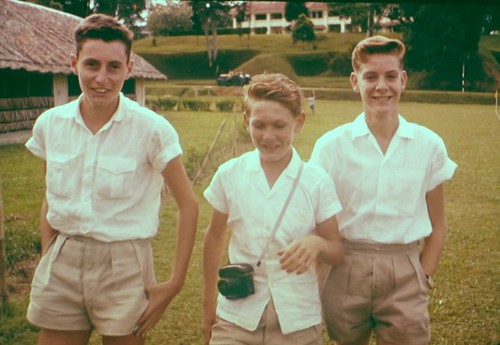
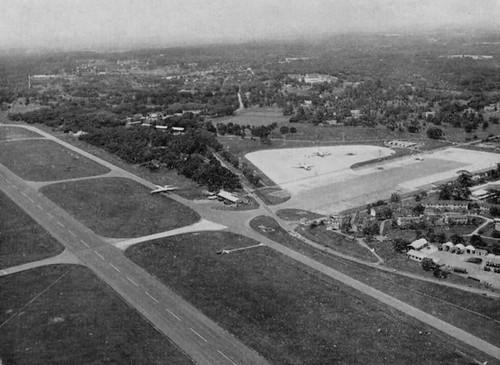
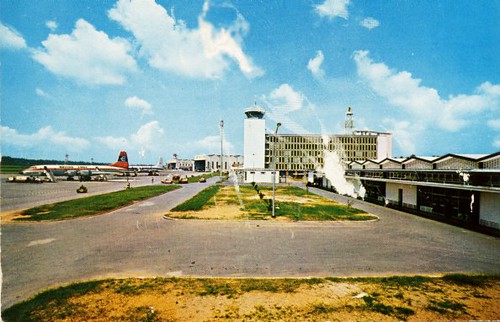

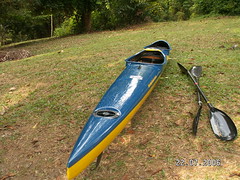

 As for the place, Brian thinks it’s an airport. In that case, most likely it’s Kallang Airport. However, I have a few other similar photos which would suggest that this photo was taken at place called Port Swettenham in 1957. Now I leave the younger readers to figure out for themselves where is Port Swettenham.
As for the place, Brian thinks it’s an airport. In that case, most likely it’s Kallang Airport. However, I have a few other similar photos which would suggest that this photo was taken at place called Port Swettenham in 1957. Now I leave the younger readers to figure out for themselves where is Port Swettenham.

.JPG)

